#20: tranquil fishing towns, chargrilled frangos and striking coastline
A cycling, swimming (and eating) tour of the Atlantic Coast in Portugal
Back in early June, we cycled from Porto to Lisbon in Portugal via the Atlantic Coast. Approximately 500 kilometres over 8 days; part of a larger velo route which is typically followed from the southern Algarve coast all the way north to Spain. Aside from having booked our rental bikes ahead of time, not much else was prepared, including our comprehension of the terrain ahead of us. I was under the impression the ride would be “not very hilly”. We stocked up our camping supplies in Porto, hobbled together a bike packing set-up with some straps and rented panniers; and off we went.
After exiting Porto in drizzling weather, we gradually lost sight of any markings of a city and essentially traced the coast for 40 kilometres. Furadouro, a small fishing and beach town south of Porto welcomed us for night one. The whole town was filtered in a subdued sandy colour, with a wide pedestrian corso stretching adjacent from the beach and lined with shops and restaurants, a common feature of small Portuguese towns. But looking closely at some of the cubic shaped homes, the walls were decorated with intricately laid tiles, colourful mosaics and murals paying homage to the town's history as a multi-generational traditional fishing spot. We strolled a couple of quiet blocks in search of dinner and were soon arrested by the umami waft of charcoal. Two tanned men donning singlets, shorts and gloves were stationed outside a restaurant with open pits, flame-grilling seafood. We left an hour later full of tender cod fillet (a Portuguese specialty), creamy boiled potatoes dosed in oil, and prawns charred to perfection on a skewer; with the lingering taste of a sharp, acidic vinho verde (green wine) on the tongue. If bikepacking is always like this, sign me up.

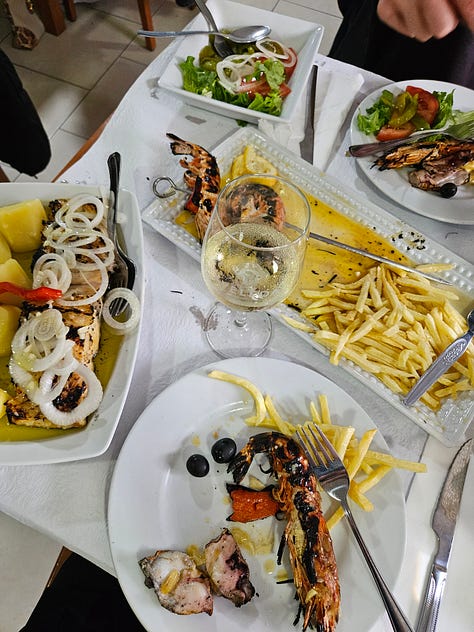
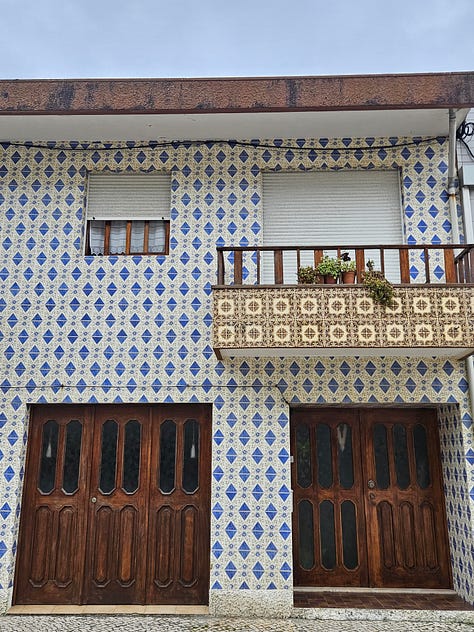
From there, the ride was sweaty, windy and tough going at times, but mostly it continued to be magic. Each day began with a refuel at a bakery in sleepy coastal towns - multiple pastries, pastei de natas and freshly squeezed orange juice. We’d grab some flat white peaches for the road. We’d swim in the chilly, moody ocean to cool off, stop for a lunch of frango asado with batata frita from a local takeaway, maybe watch a game of beach football, and end the days with a cold lager and tremoços (pickled, salty lupini beans and my new fav beer snack) before pitching our tent for the night in a municipal campground.
A few days in, we decided to pick up the pace and ride over 100km, which seemed a good idea until we were met with blasting heat on a seemingly endless stretch of road surrounded by scrubby desert-like terrain, with head wind to boot. But it worked out a smart choice, because the ones following were shorter in distance but far more challenging in elevation. The “not very hilly” flat path that traced the vast dunes of the north soon became continuous ups to a coastal cliff or the top of a mountain village, and then rapid downs as we’d descend to the beachside. There were also many kilometres of gravel riding, spent dodging potholes through farmland or maneuvering a (very pretty) coastal hiking trail. Our eight gear touring bikes no longer seemed like the best steed to weather this terrain, particularly when my rear pannier frame disconnected from the bike and ten minutes later Callum got a flat tyre. But with frugalness and perseverance in mind, we made it with the reward of more pastries and snacks and swims.
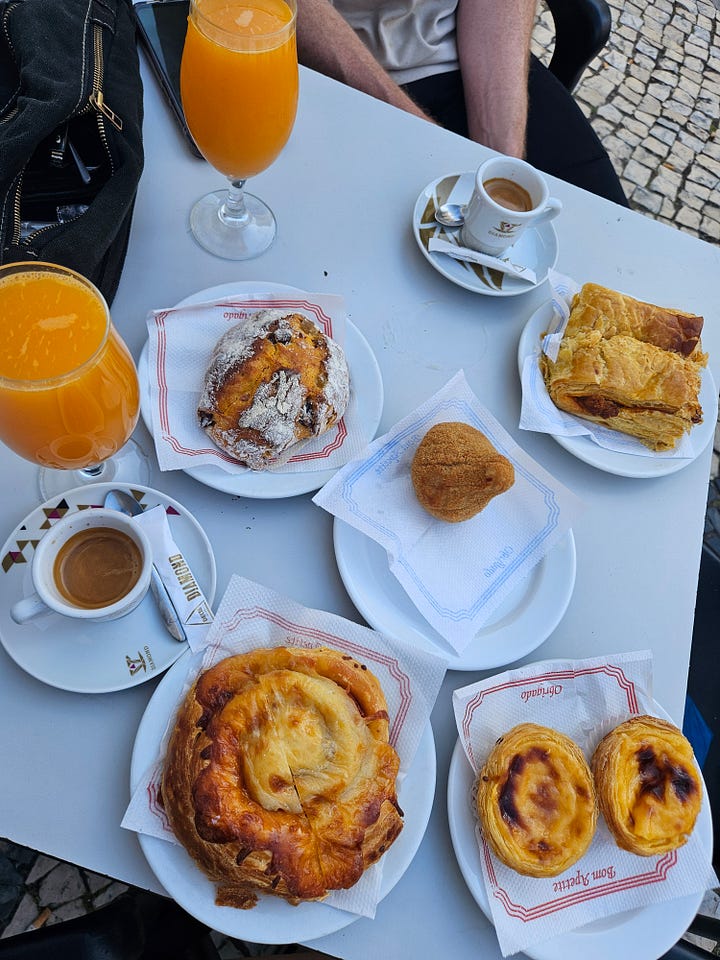
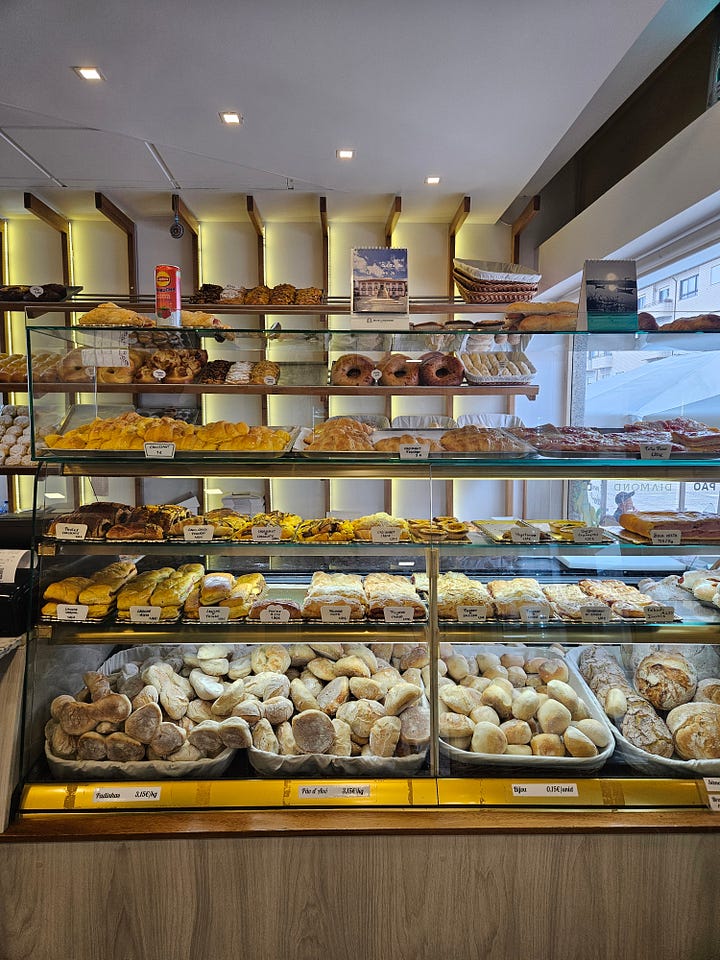
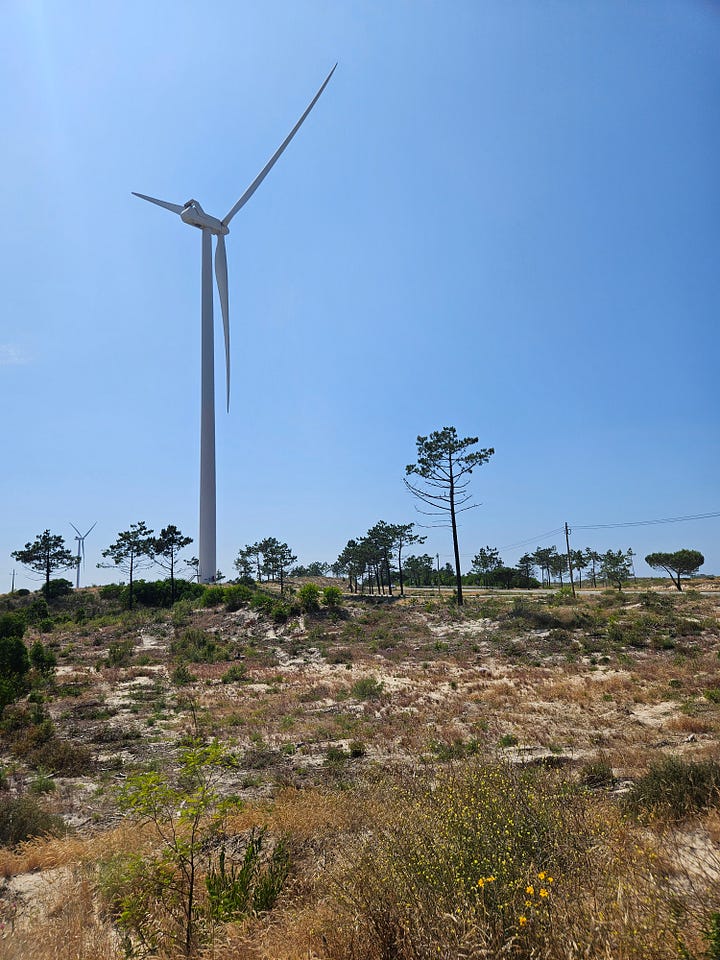
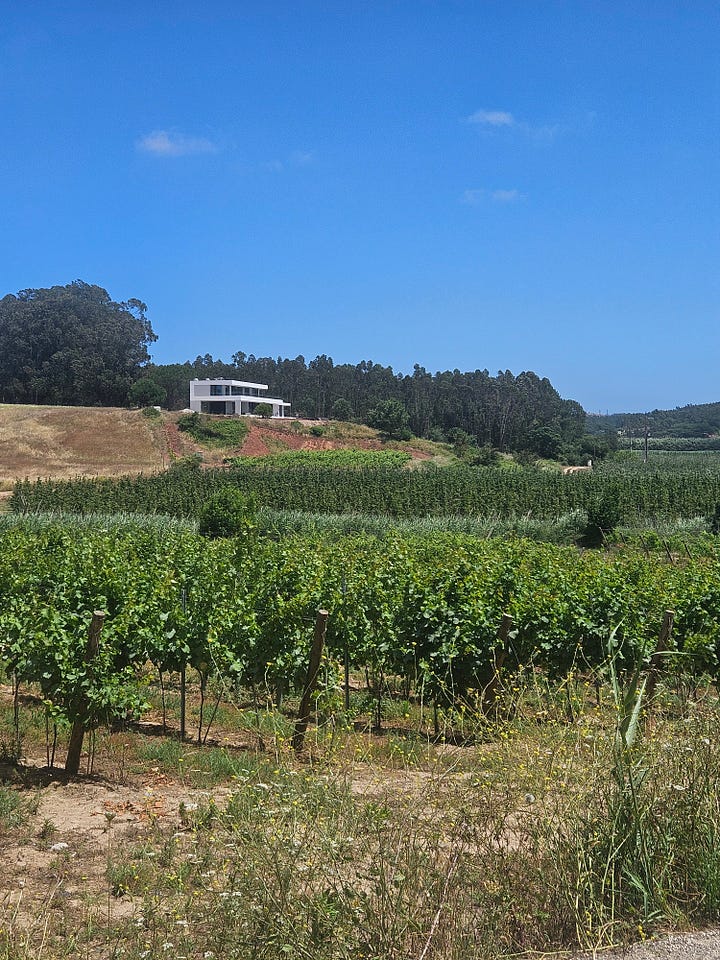
The seaside was utterly gorgeous - and so welcomed after months away from the ocean - from sweeping sand dunes, past estuaries and lagoons, to dramatic shrubby cliffs further south. There were an unbelievable number of beaches. The sunsets were a particularly shade of deep blood orange and rose. What surprised me most on this ride, though, was the strong scent of eucalyptus, which grows in many forests through Portugal. Scenes cycling through rolling hills and bush reminiscent of Jervis Bay transported me temporarily back home.
Towns once popular as traditional fishing ports, such as Nazaré and Peniche, now attract surfers from all over. Nazaré is said to have among the biggest waves in the world, which you can watch from high up on the walls of the old village Sítio. On the day we visited, it was dead flat. The ocean shimmered a brilliant blue against the white walls and terracotta roofs of the town. Boutique accommodation and modern restaurants with international cuisine and health-conscious cafes are burgeoning in such places, giving a bit of Byron Bay energy. Older locals who run a gelato bar or traditional Portuguese restaurants are finding it harder to cling on with the rising price of rent.
At Santa Cruz, a similarly growing tourist town, we stayed in an Airbnb hosted by a Dutch / Polish couple on the outskirts of town. They'd bought their five bedroom home a couple of years ago when the property market was low after covid, but both work remote corporate jobs in Biotech. We discussed how locals are being priced out, with local wages unable to keep up with inflating demand and international investors. It's a story we're hearing time and time again while traveling. They were cognisant they're somewhat part of the problem, but were making an effort to be part of the community. They both spoke Portuguese and were raising their children multilingual. Can you blame them for wanting a good life for their family?
The beaches at Santa Cruz were among the best, and I relished lying by the shade of red tinted beach umbrellas in a curved bay. There, at the end of day six, we contemplated if and how we could stay longer, feeling a little unmotivated to embark on the final 80 kilometres of hills and city riding to central Lisbon. The bliss of this coastal expedition was almost over and my legs and butt were sore.
I'd grown fond of the hospitality and chilled nature of the Portuguese, and intrigued by the quiet existence of many almost-forgotten villages. The way they hold on to tradition in both food and craft. I felt immediately inspired to come back and do the whole thing from south to north.
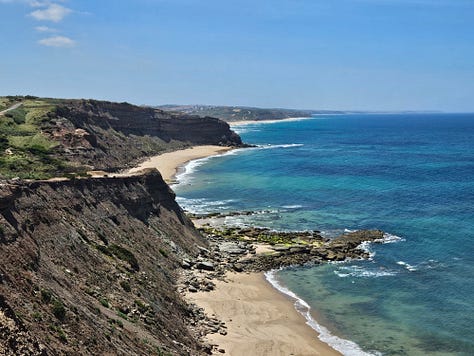
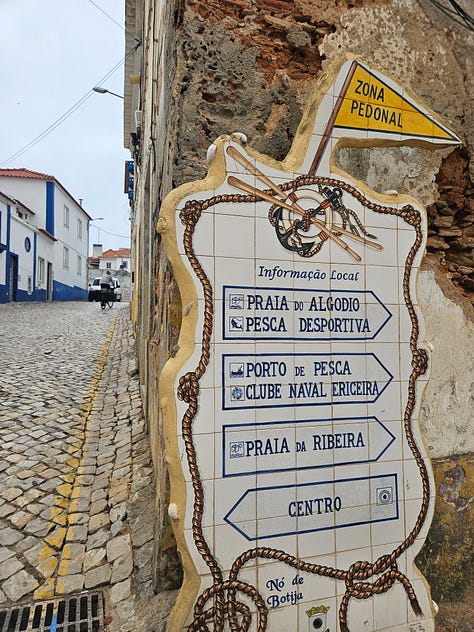
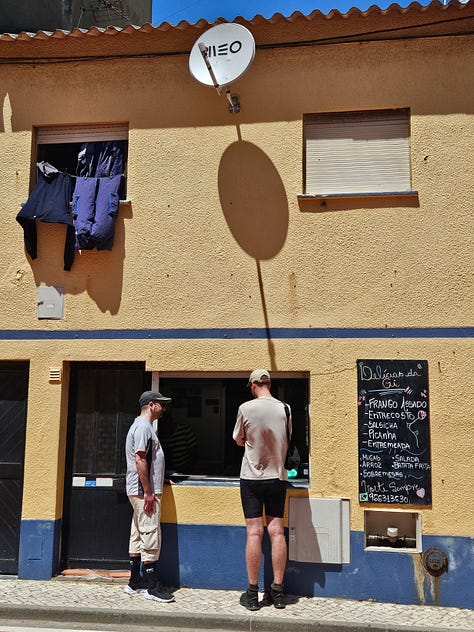
Veer back to:
Restaurante Casa Figueiras - Aforementioned neighbourhood restaurant in Furadouro - everything came under $30 and we ate like royalty. Fresh, hearty food and wonderful service.
Tás CÁ Dentro Gastro Club, Figuera de Foz - we were looking for a late dinner within this coastal city, and this stylish homey restaurant was the one of few places open. We sat down with a warm welcome to oxtail toast, excellent steak, battered local fish and a smooth Douro red wine.
Praia de São Martinho do Porto - just south of Nazaré which felt a little overwhelming with tourists, we stopped at São Martinho, a chilled town with a wineglass-shaped bay, for a quick swim. We ended up spending more than an hour, perusing the street side markets, eating a hot beef roll on freshly baked bread and sipping fizzy Sumos before tackling the next lot of hills and an afternoon of singalongs.
Casa de Fernanda - in the extremely charming seaside town of Ericeira, a small bakery serves up traditional ouriços, a moist caramely, almond-flour tart. Best enjoyed with an espresso overlooking the ocean. 10/10.

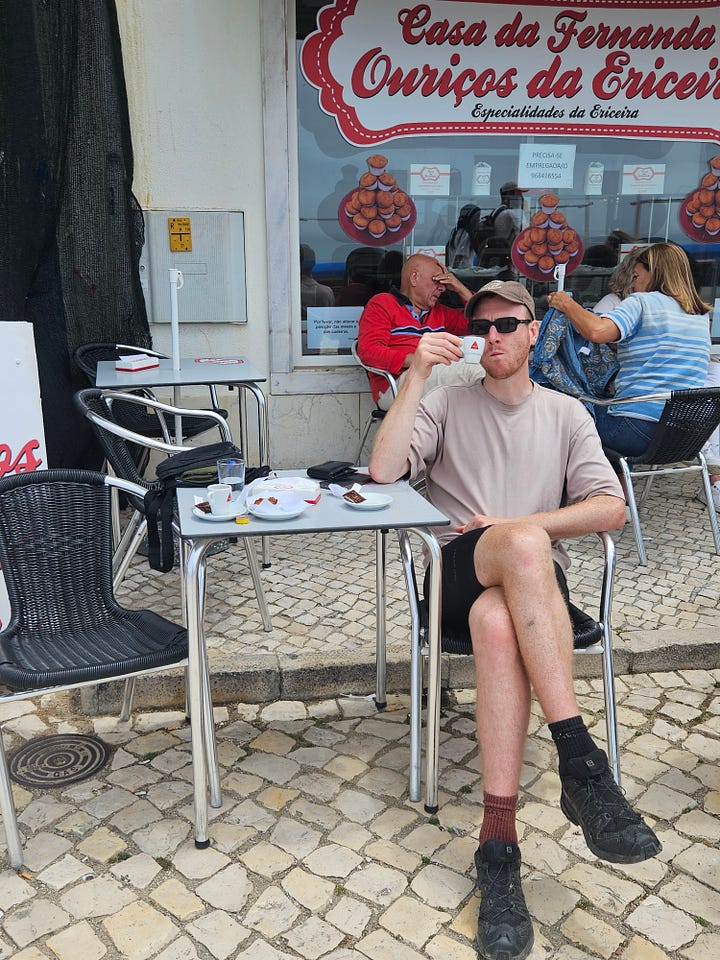
Porto! I didn't spend any time exploring the city, and I regret it.



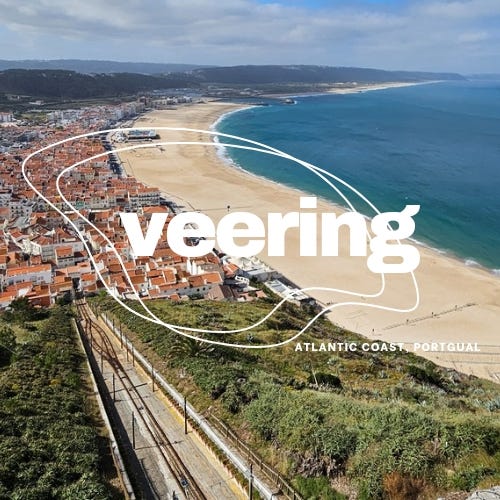

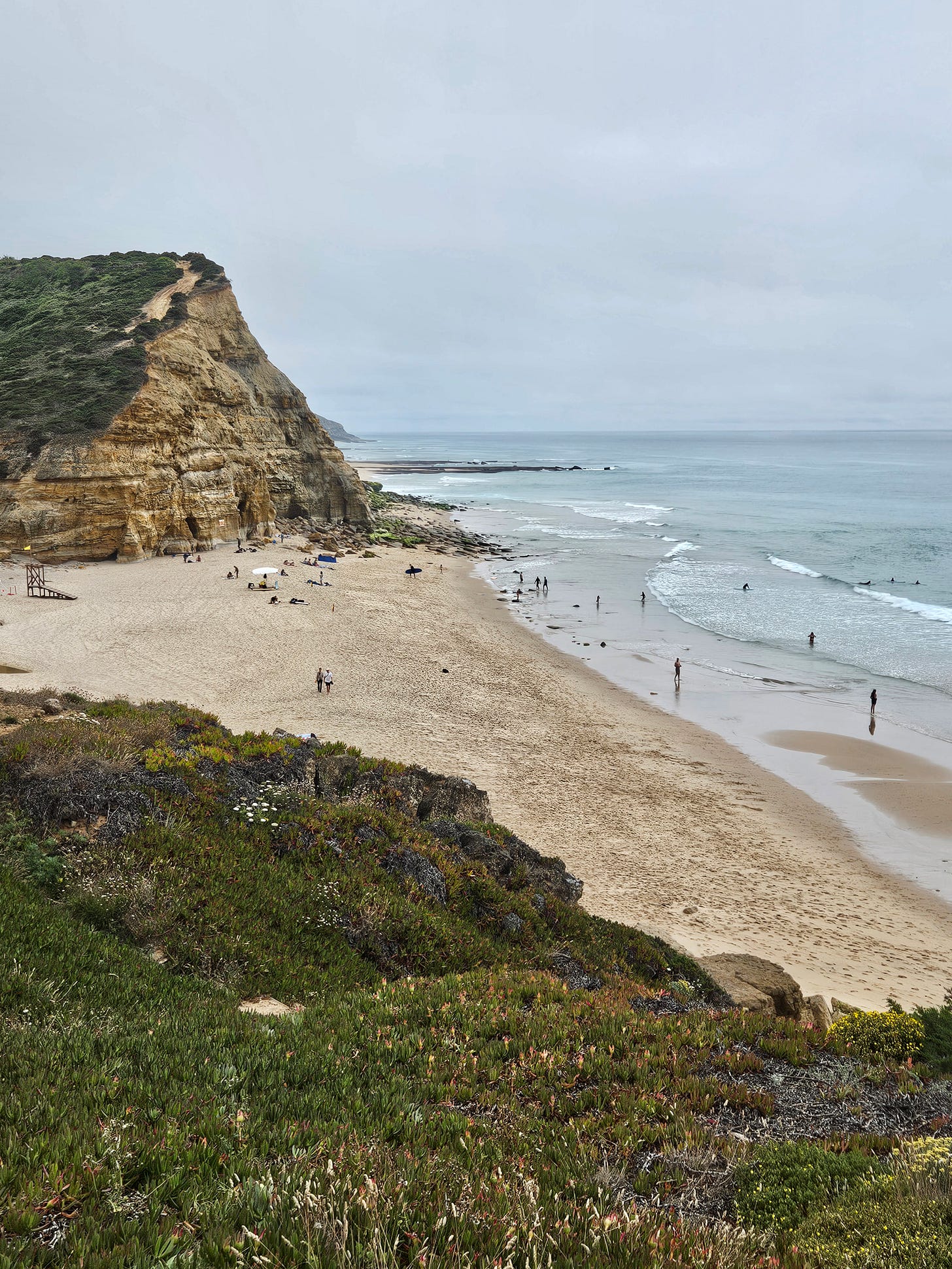
Hi Em,
I just got back to finishing reading this story . After our long, lovely chat the other day I mentioned to Diana that you like her comments. She was very pleased!!
I liked your account of bike packing. It makes my heart and mind glow to think that you completed such a challanging ride and lovely adventure. love Rob